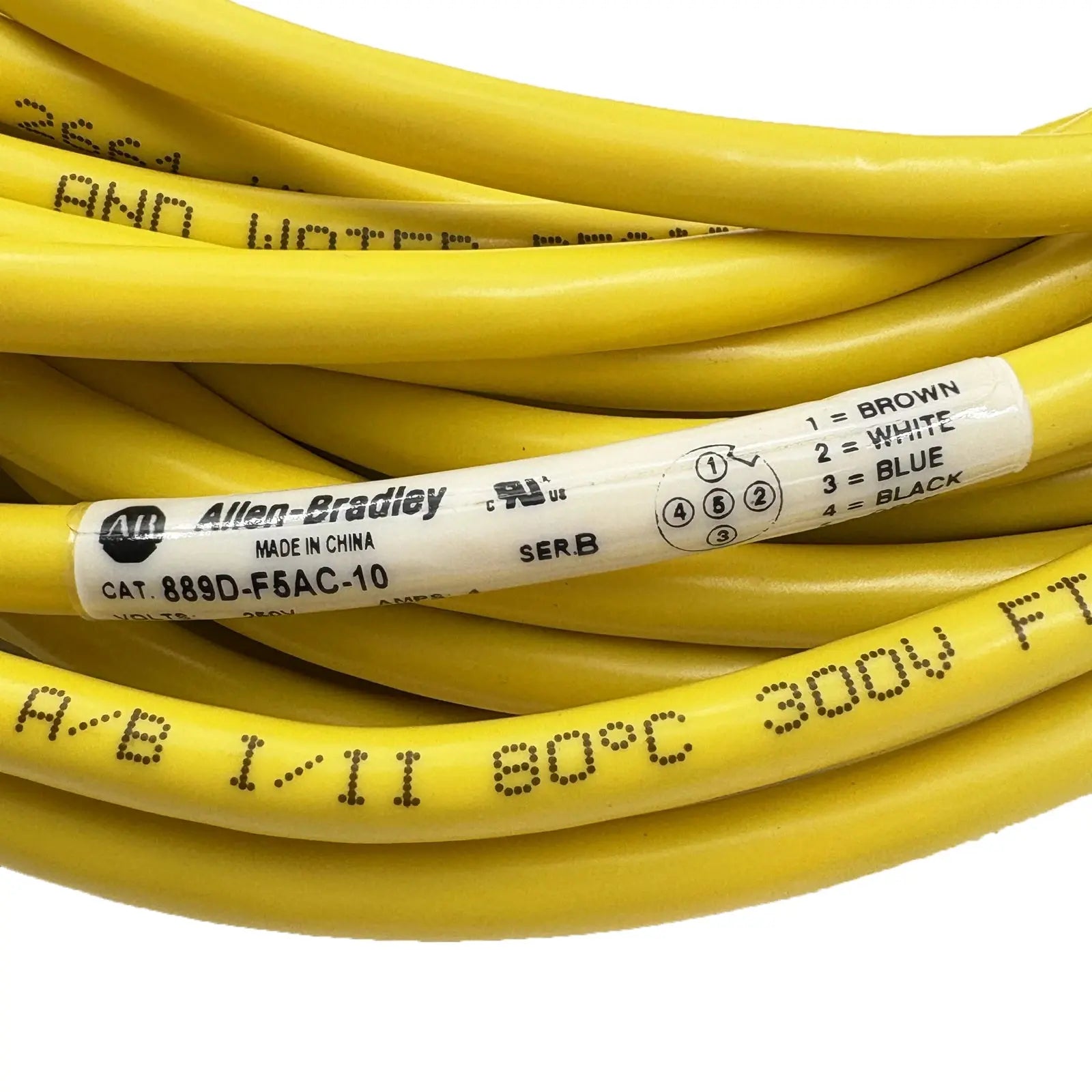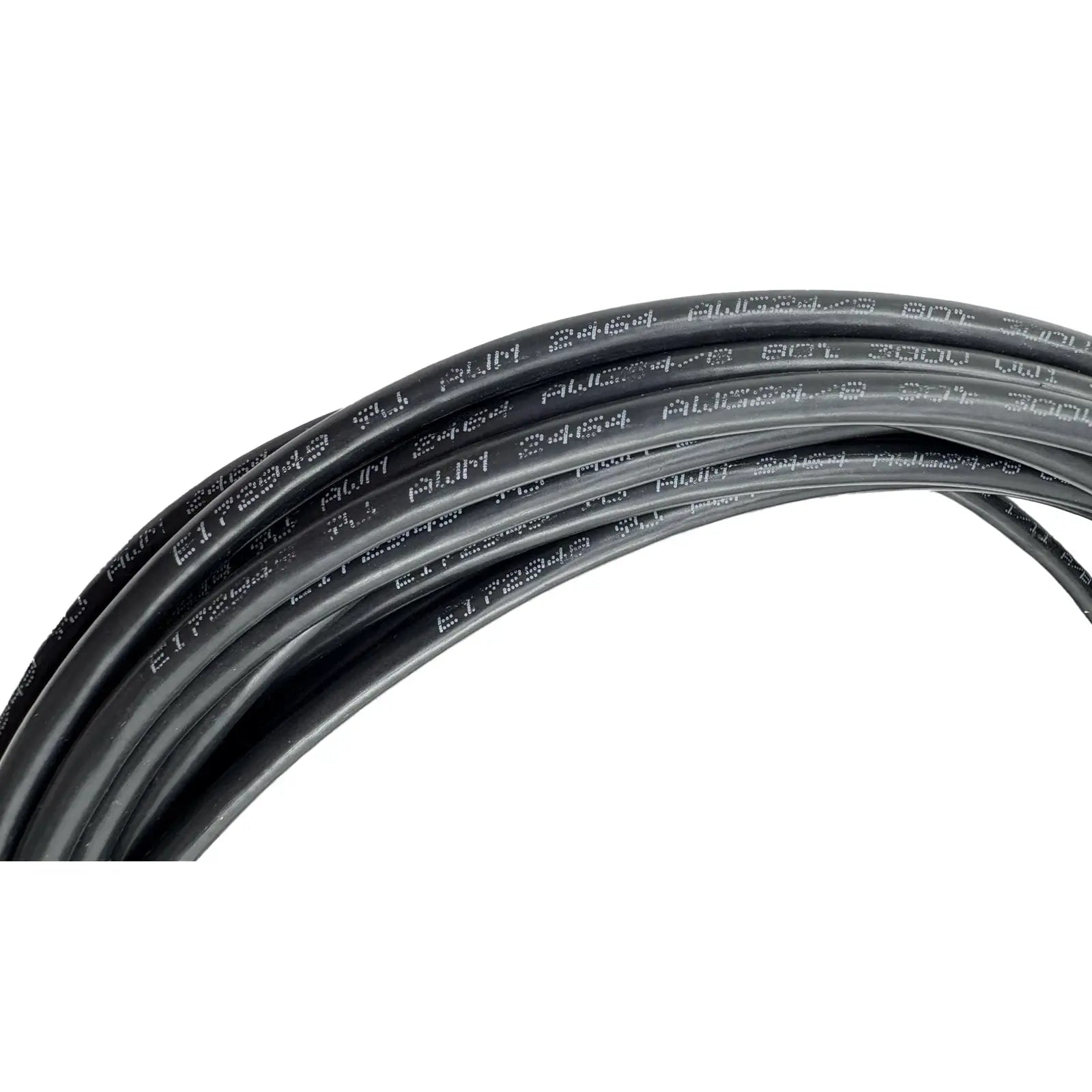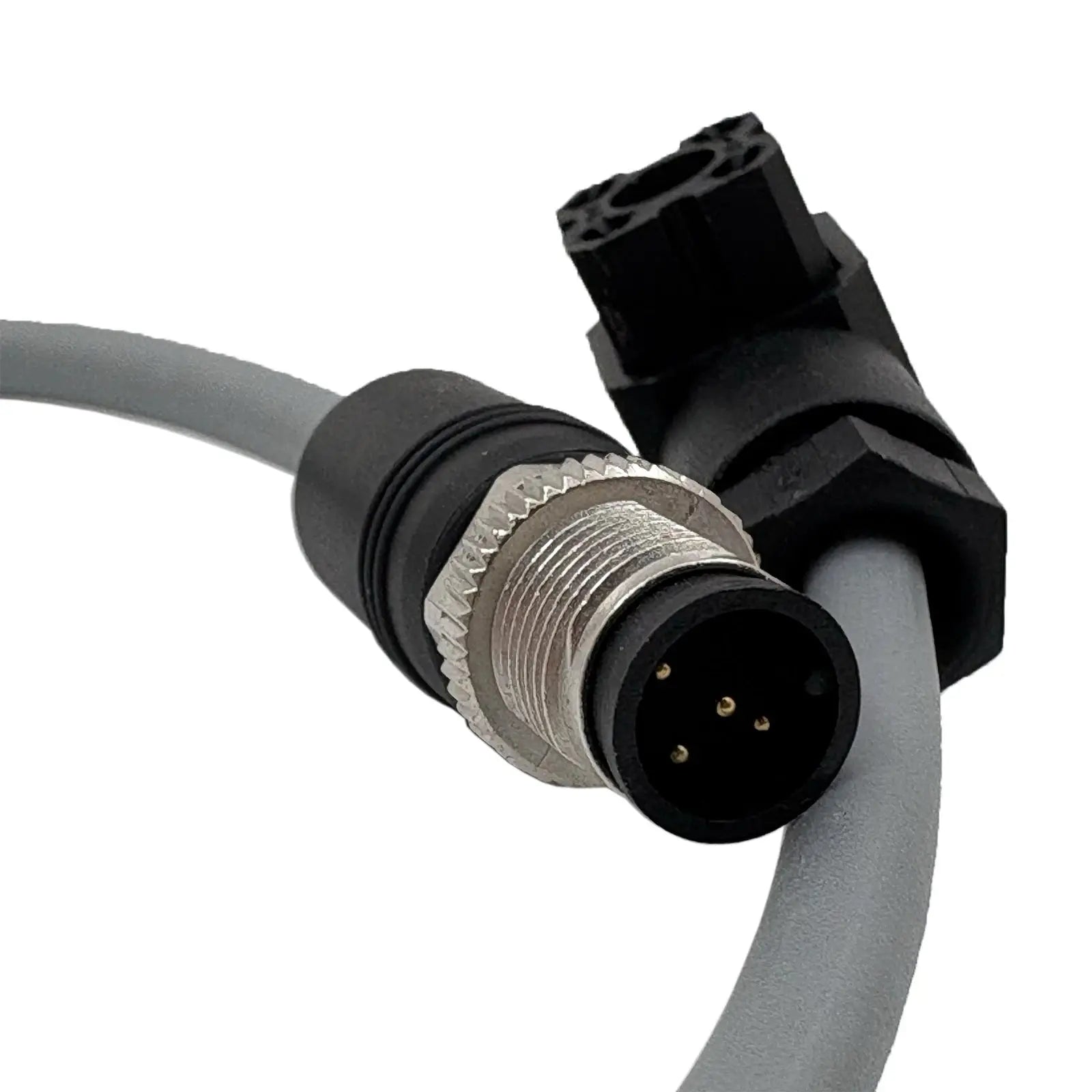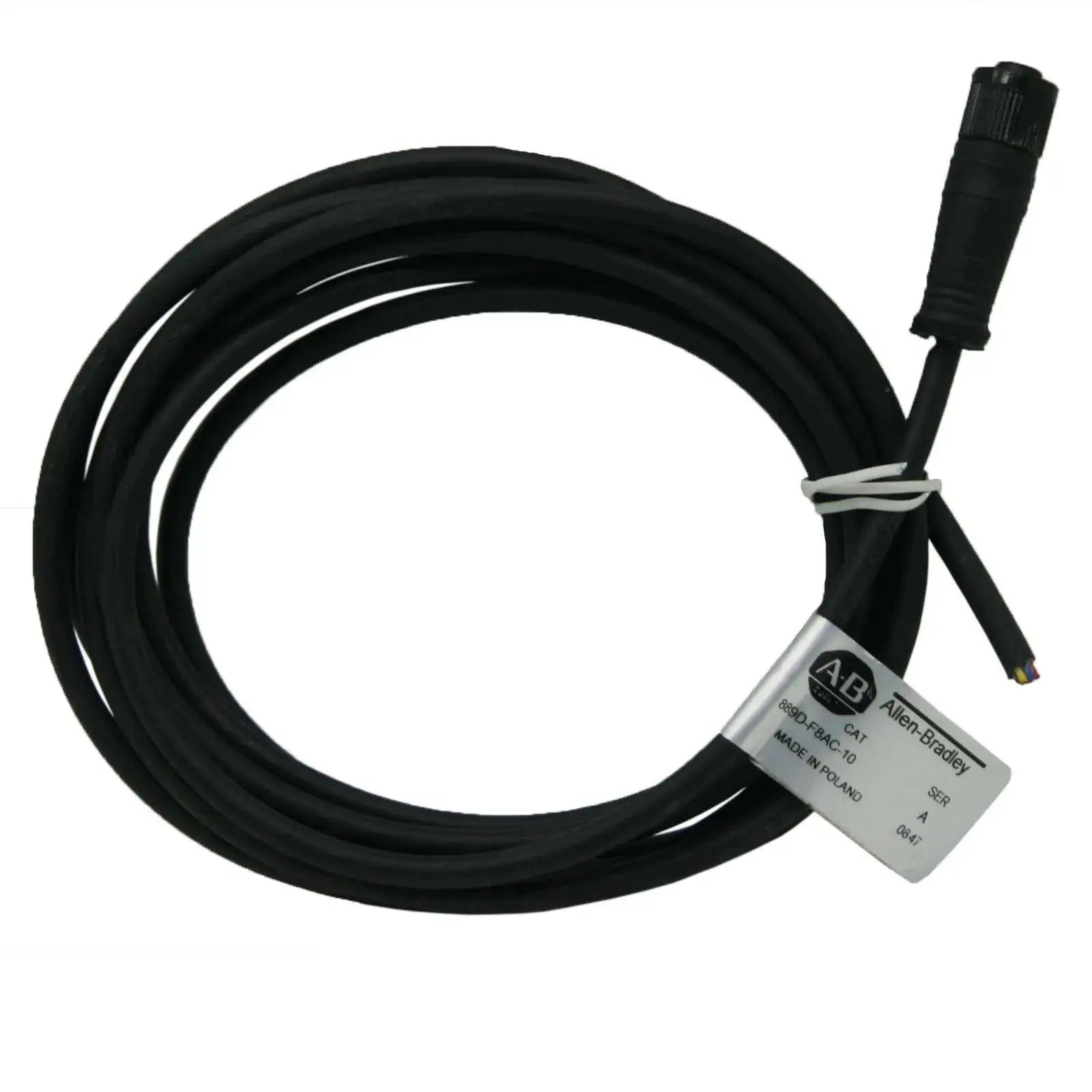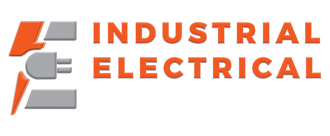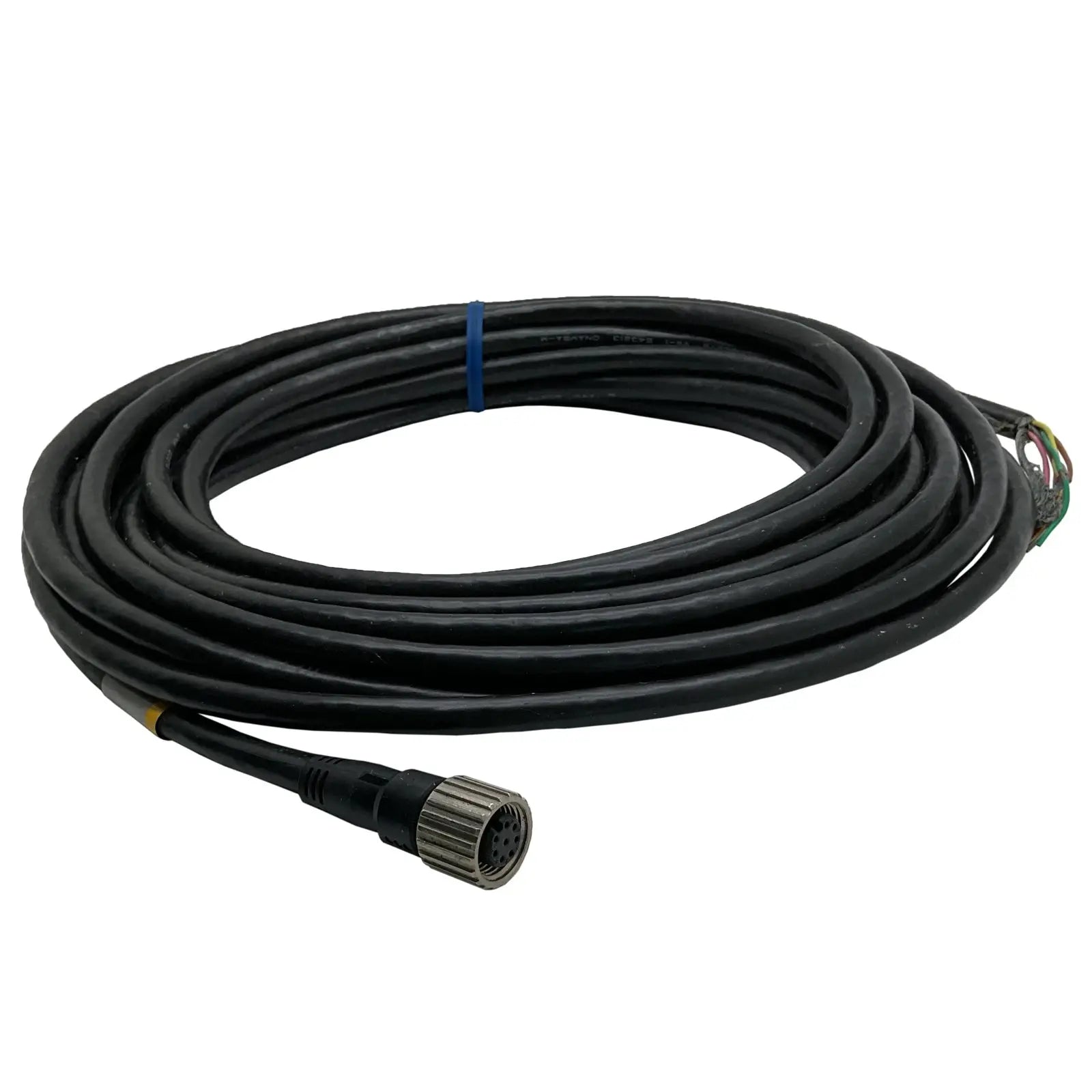Cables de sensores: comunicación fiable para sensores industriales
Los sensores industriales desempeñan un papel crucial en los procesos modernos de fabricación y automatización. Proporcionan datos valiosos que ayudan a supervisar y controlar diversos aspectos de la producción, garantizando la eficiencia y la calidad. Sin embargo, para que estos sensores se comuniquen de forma eficaz y fiable, dependen de cables sensores. Comprender la función de los cables sensores en la comunicación industrial es esencial para optimizar el rendimiento y minimizar el tiempo de inactividad.
Comprensión del papel de los cables sensores en la comunicación industrial
Los cables de sensores actúan como enlace entre los sensores y los sistemas de control a los que están conectados. Permiten la transmisión fluida de señales y datos, lo que permite la monitorización y la respuesta en tiempo real. Además de la función básica de transmisión de señales, los cables de sensores desempeñan funciones cruciales adicionales.
La funcionalidad básica de los cables sensores
La función principal de los cables de sensores es transferir las señales generadas por sensores industriales a los sistemas de control. Estas señales pueden incluir mediciones de temperatura, presión, humedad u otros parámetros críticos. Los cables garantizan que los datos se transmitan con precisión y puntualidad, lo que facilita un control y una toma de decisiones adecuados.
Importancia de una comunicación confiable en entornos industriales
En entornos industriales, la comunicación fiable es fundamental. Las interrupciones causadas por fallos de comunicación pueden ocasionar pérdidas financieras significativas, disminución de la productividad y comprometer la seguridad. Por lo tanto, los cables de los sensores deben diseñarse y mantenerse para garantizar una transmisión de datos ininterrumpida y sin errores.
Un aspecto importante a considerar en cuanto a los cables sensores es su resistencia a los factores ambientales. Los entornos industriales pueden ser hostiles, con temperaturas extremas, humedad y exposición a sustancias químicas. Los cables sensores deben soportar estas condiciones para garantizar una comunicación fiable. Los fabricantes suelen utilizar materiales y técnicas de aislamiento especializados para aumentar la durabilidad y la longevidad de los cables sensores.
Además, la longitud de los cables de los sensores también puede afectar su rendimiento. Cables más largos pueden degradar la señal e interferir, lo que provoca una transmisión de datos imprecisa. Para mitigar esto, los ingenieros calculan cuidadosamente la longitud de cable necesaria en función de la distancia entre los sensores y los sistemas de control. También consideran factores como el tipo de señal transmitida y el nivel de ruido ambiental.
Diferentes tipos de cables sensores y sus aplicaciones
En cuanto a cables para sensores, existen numerosas opciones en el mercado. Cada tipo de cable está diseñado específicamente para satisfacer diferentes requisitos y condiciones, garantizando un rendimiento y una fiabilidad óptimos. La elección del cable depende de diversos factores, como el entorno, el tipo de señal y la distancia.
Profundicemos en el mundo de los cables sensores y exploremos algunos de los tipos más utilizados.
Cables de sensor de un solo extremo
Los cables de sensor de un solo extremo son la opción más común en el mundo de los cables de sensor. Su uso es generalizado gracias a su simplicidad y rentabilidad. Estos cables cuentan con un conector para el sensor y otro para el sistema de control, lo que facilita su instalación y mantenimiento. Son ideales para aplicaciones que requieren distancias cortas, como en la automatización industrial, donde los sensores se encuentran muy cerca del sistema de control.
Estos cables están diseñados para transmitir señales desde el sensor al sistema de control, garantizando una transmisión de datos precisa y fiable. Están disponibles en diversas configuraciones, incluyendo opciones blindadas y sin blindaje, lo que permite a los usuarios elegir la que mejor se adapte a sus necesidades específicas.
Cables de sensor de doble extremo
Cuando se trata de distancias más largas o situaciones donde los sensores deben conectarse en serie, los cables de sensor de doble extremo son la solución. Estos cables cuentan con conectores en ambos extremos, lo que proporciona flexibilidad y facilidad de instalación. Permiten la conexión en cadena de múltiples sensores, lo que los convierte en una opción popular en aplicaciones donde se necesitan conectar varios sensores de forma lineal.
Los cables de sensor de doble extremo están diseñados para garantizar una transmisión fiable de señales a largas distancias. Se utilizan a menudo en industrias como la manufacturera, donde los sensores se distribuyen a lo largo de una línea de producción. Estos cables no solo simplifican la instalación, sino que también reducen el coste total al eliminar la necesidad de conectores o cajas de conexiones adicionales.
A medida que la tecnología avanza, los cables de sensores se especializan cada vez más para satisfacer las demandas cambiantes de diversas industrias. Desde cables resistentes a altas temperaturas para entornos hostiles hasta cables con blindaje mejorado para la reducción del ruido, existe un cable de sensor para cada aplicación.
Así que, la próxima vez que necesite cables para sensores, recuerde considerar los requisitos específicos de su aplicación y elegir el cable que mejor se adapte a sus necesidades. Con el cable para sensores adecuado, puede garantizar una transmisión de datos fluida y fiable, lo que se traduce en un mejor rendimiento y eficiencia.
Características principales de los cables de sensores de alta calidad
Al elegir cables de sensores para aplicaciones industriales, se deben considerar ciertas características clave. Estas garantizan un rendimiento óptimo y una larga vida útil del enlace de comunicación.
Material y construcción de los cables de los sensores
Los cables de sensor de alta calidad están fabricados con materiales duraderos y fiables que soportan entornos industriales hostiles. Suelen estar blindados para minimizar la interferencia de señales externas y están diseñados para resistir la abrasión, los productos químicos y las temperaturas extremas.
Uno de los materiales más utilizados para cables de sensores es el cloruro de polivinilo (PVC). El PVC es conocido por sus excelentes propiedades eléctricas, flexibilidad y resistencia a la humedad y a los productos químicos. Ofrece una solución fiable y rentable para numerosas aplicaciones industriales.
Sin embargo, en entornos más exigentes que requieren mayor durabilidad y resistencia, pueden ser preferibles los cables de sensor fabricados con materiales como poliuretano (PUR) o etileno propileno fluorado (FEP). Estos materiales ofrecen mayor resistencia a la abrasión, a los productos químicos y a las temperaturas extremas, lo que garantiza la longevidad de los cables de sensor incluso en las condiciones más adversas.
Longitud del cable y tipos de conectores
Una longitud de cable adecuada es crucial para mantener la integridad de la señal. Una longitud de cable excesiva puede provocar degradación o interferencias de la señal, mientras que una longitud insuficiente puede restringir la colocación del sensor. Idealmente, los cables de los sensores deben fabricarse a medida según la longitud requerida y contar con conectores compatibles con los sensores y sistemas de control utilizados.
En cuanto a los tipos de conectores, existen diversas opciones, cada una con sus propias ventajas y consideraciones. Algunos tipos de conectores comunes en cables de sensores incluyen conectores circulares, conectores rectangulares y conectores M12.
Los conectores circulares se utilizan ampliamente en aplicaciones industriales gracias a su robustez y fiabilidad. Proporcionan una conexión segura y sellada, lo que los hace adecuados para entornos con humedad, polvo o vibraciones.
Los conectores rectangulares, por otro lado, ofrecen una solución compacta que ahorra espacio. Se suelen utilizar en aplicaciones donde es necesario conectar varios sensores en un espacio reducido.
Los conectores M12 son conocidos por su rápida y sencilla instalación. Cuentan con un mecanismo de bloqueo roscado que garantiza una conexión segura y evita desconexiones accidentales. Se utilizan comúnmente en aplicaciones que requieren el reemplazo o mantenimiento frecuente de sensores.
Al considerar el material y la construcción de los cables de sensor, así como su longitud y los tipos de conector, los usuarios industriales pueden asegurarse de seleccionar cables de sensor de alta calidad que satisfagan sus necesidades específicas. Estos cables proporcionarán una transmisión de datos fiable y precisa, contribuyendo así a la eficiencia y el éxito general de sus operaciones industriales.
Solución de problemas comunes del cable del sensor
A pesar de su importancia, los cables de los sensores pueden presentar problemas que afecten la fiabilidad de la comunicación. Comprender y abordar estos problemas a tiempo puede ayudar a minimizar las interrupciones y mejorar el rendimiento general del sistema.
En lo que respecta a los cables de sensores, un problema común es la interferencia de la señal. La interferencia de equipos cercanos, ondas electromagnéticas o fuentes de alimentación puede distorsionar o corromper las señales de los sensores, lo que genera lecturas inexactas. Para combatir este problema, es fundamental utilizar cables blindados y emplear técnicas adecuadas de conexión a tierra. Los cables blindados ayudan a minimizar el impacto de los campos electromagnéticos externos, mientras que una conexión a tierra adecuada garantiza que cualquier corriente eléctrica parásita se redirija de forma segura. Las inspecciones y el mantenimiento regulares también son fundamentales para identificar posibles fuentes de interferencia y tomar las medidas necesarias para mitigarlas.
Otro desafío que enfrentan los cables de sensores en entornos industriales es el daño físico y el desgaste. Estos entornos hostiles pueden exponer los cables a diversos peligros, como la exposición a productos químicos, temperaturas extremas y maquinaria pesada. Con el tiempo, esto puede provocar la degradación del aislamiento del cable o daños en los conectores, lo que compromete la integridad de la comunicación. Para evitar interrupciones y garantizar una comunicación fiable, es fundamental implementar inspecciones periódicas y prácticas de gestión de cables. Las inspecciones pueden ayudar a identificar cualquier signo de desgaste o daño de forma temprana, lo que permite la sustitución rápida de los cables dañados. Además, implementar prácticas adecuadas de gestión de cables, como asegurar los cables lejos de posibles peligros y utilizar cubiertas protectoras, puede prolongar significativamente la vida útil de los cables de sensores.
Interferencia de señal en cables de sensores
La interferencia de equipos cercanos, ondas electromagnéticas o fuentes de alimentación puede distorsionar o corromper las señales de los sensores. El uso de cables blindados y técnicas adecuadas de conexión a tierra puede ayudar a mitigar este problema. Además, las inspecciones y el mantenimiento regulares pueden identificar posibles fuentes de interferencia.
Daños físicos y desgaste
Los entornos industriales pueden ser hostiles, y los cables de los sensores son vulnerables a daños físicos y desgaste con el tiempo. La exposición a productos químicos, temperaturas extremas o maquinaria pesada puede causar degradación del aislamiento del cable o daños en los conectores. Las inspecciones periódicas, las prácticas de gestión de cables y la sustitución inmediata de los cables dañados pueden prevenir interrupciones y garantizar una comunicación fiable.
Tendencias futuras en la tecnología de cables sensores
El campo de la tecnología de cables sensores evoluciona continuamente para satisfacer las crecientes demandas de las aplicaciones industriales. Los avances tanto en el diseño de cables como en la tecnología inalámbrica están configurando el futuro de la comunicación industrial.
Avances en el diseño de cables sensores
Nuevos materiales y técnicas de fabricación mejoradas están dando lugar a cables sensores más robustos, flexibles y duraderos. Estos avances optimizan la capacidad de transmisión de señales y aumentan la resistencia a factores externos. Por ejemplo, el uso de polímeros avanzados con alta resistencia química permite que los cables sensores soporten entornos hostiles, como los de las plantas de procesamiento químico.
Además, la integración de la nanotecnología en el diseño de cables sensores abre nuevas posibilidades. Al incorporar materiales a escala nanométrica, los cables sensores pueden alcanzar niveles de sensibilidad y precisión sin precedentes. Este avance tiene el potencial de revolucionar las industrias que dependen de mediciones precisas, como el diagnóstico médico y la ingeniería aeroespacial.
Además, el desarrollo de cables sensores inteligentes con capacidad de autodiagnóstico está en el horizonte. Estos cables inteligentes podrán monitorizar su propio rendimiento, detectar fallos o daños e incluso predecir las necesidades de mantenimiento. Este enfoque proactivo para la gestión de cables reducirá significativamente el tiempo de inactividad y mejorará la fiabilidad general del sistema.
El impacto de la tecnología inalámbrica en los cables sensores
La tecnología inalámbrica está revolucionando la comunicación industrial. Si bien los cables sensores siguen siendo esenciales para ciertas aplicaciones, las soluciones inalámbricas ofrecen flexibilidad, escalabilidad y mayor movilidad. La integración de la tecnología inalámbrica con los cables sensores permite sistemas de comunicación híbridos, ofreciendo lo mejor de ambos mundos en cuanto a fiabilidad y adaptabilidad.
Una de las principales ventajas de la tecnología inalámbrica es su capacidad para superar barreras físicas y ampliar el alcance de las redes de sensores. Esto significa que los sensores pueden instalarse en ubicaciones remotas o de difícil acceso sin necesidad de una extensa infraestructura de cableado. Para industrias con instalaciones extensas o maquinaria compleja, esta capacidad inalámbrica se traduce en un importante ahorro de costes y mayor eficiencia operativa.
Además, la llegada de protocolos inalámbricos de bajo consumo, como Bluetooth Low Energy (BLE) y Zigbee, ha abierto nuevas posibilidades para los sensores alimentados por batería. Estos protocolos de bajo consumo permiten un funcionamiento duradero del sensor sin necesidad de cambiar la batería con frecuencia, lo que los hace ideales para aplicaciones con suministro de energía limitado o inaccesible.
En conclusión, los cables de sensores desempeñan un papel fundamental para garantizar una comunicación fiable para los sensores industriales. Comprender su funcionalidad, tipos y características clave puede ayudar a optimizar el rendimiento y minimizar el tiempo de inactividad. Sin embargo, con los avances en el diseño de cables de sensores y la integración de la tecnología inalámbrica, el futuro de la comunicación industrial está preparado para una innovación aún mayor. Al solucionar problemas comunes y adoptar estas tendencias futuras, la comunicación industrial puede seguir evolucionando y satisfacer las crecientes demandas de la fabricación moderna.
¿Necesita pedidos al por mayor o recomendaciones de expertos sobre SB-SC?
¿Busca pedidos al por mayor de SB-SC o necesita ayuda para elegir la solución industrial adecuada? Nuestro equipo está aquí para ayudarle con presupuestos personalizados, recomendaciones de productos y asesoramiento técnico. Ya sea electricista, contratista o empresario, ofrecemos soluciones a medida para satisfacer sus necesidades.
📩 ¡ Contáctanos o chatea con nosotros en vivo para obtener asistencia instantánea!
¡Explora nuestra colección de ofertas de locura mensual!
¡No te pierdas los **grandes ahorros** en nuestra tienda! Descubre las mejores ofertas en:
¡Explora estas categorías ahora y aprovecha las mejores ofertas antes de que se acaben!



